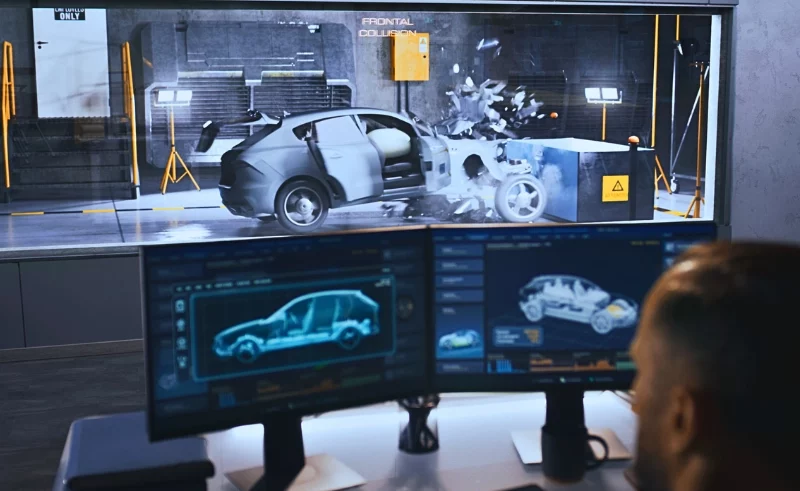Since 1978, the National Highway Transportation Safety Administration has assessed the safety of various new vehicles via a five-star rating system. But just what do those numbers mean? Todd E. Copeland & Associates offers this quick cheat sheet to use the next time you’re in the market for a new ride.

Officially called the New Car Assessment Program (NCAP), the system tests the most popular vehicles and those that have undergone structural or safety feature changes from the prior model year. Tests are performed to assess frontal crash, side impact and rollover safety.
Frontal crash tests: The NHTSA’s frontal tests involve two crash test dummies the size of average adult men placed in the driver and front-passengers seats and secured with seatbelts. The vehicle is crashed head-on into a fixed barrier at 35 miles per hour and researchers then measure the force of impact on the dummies’ head and chest areas.
- 5 Stars = 10 percent or less chance of injury
- 4 Stars = 11-20 percent chance of injury
- 3 Stars = 21-35 percent chance of injury
- 2 Stars = 36-45 percent chance of injury
- 1 Star = 46 percent or greater chance of injury
Side-impact tests: In side-impact tests, crash test dummies are placed in the driver seat and in the rear seat directly behind the driver. A 3,015-pound barrier then is slammed into the vehicle at 38.5 miles per hour, simulating a typical intersection collision. The force of the impact to the dummies’ head, neck, chest and pelvis is measured.
- 5 Stars = 5 percent or less chance of injury
- 4 Stars = 6-10 percent chance of injury
- 3 Stars = 11-20 percent chance of injury
- 2 Stars = 21-25 percent chance of injury
- 1 Star = 26 percent or greater chance of injury
Rollover tests: The NHTSA’s rollover scores are a combination of results from static and dynamic tests. The Static Stability Factor is a rating based on a mathematical calculation involving a vehicle’s weight, width and center of gravity to create a statistical likelihood that the vehicle may will roll over. In the dynamic test, a weighted vehicle that simulates a load of five passengers and a full tank of gas is driven to simulate an emergency lane change and various instruments measure tire movement. If two tires lift two inches or more off the pavement, it’s called a “tip up,” which is a precursor to a vehicle rolling over.
- 5 Stars = 10 percent or less risk of rollover
- 4 Stars = 10-20 percent risk of rollover
- 3 Stars = 20-30 percent risk of rollover
- 2 Stars = 30-40 percent risk of rollover
- 1 Star = 40 percent or greater risk of rollover
Auto accident and rollover accident attorneys with Orlando’s Todd E. Copeland & Associates urge you to take all available safety information into account when shopping for a new vehicle.
